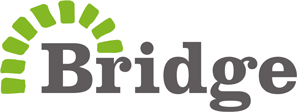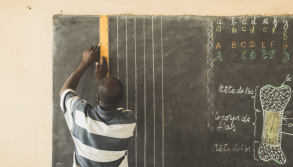The Benefits of Detailed Teacher Guides
3 January 2018
We are in the midst of a global learning crisis. Hundreds of millions of children, often in the poorest countries in the world, do not have access to education, and millions more have access, but are not learning much in the schools they attend.
What do we do about this? There are lots of ideas from a range of actors. Pupils, parents, teachers, policymakers, researchers, Ministers of Education, NGOs, businesses: all are working hard to find solutions. It’s inspiring to see the global education community acknowledging the extent of this problem, and rigorously debating the ways forward.
And yet – as an educator following this topic closely – I think we may have taken our eye off the ball. I think we need to examine, much more aggressively than we do now, the daily classroom experience of a typical child in sub-Saharan Africa. Often the “learning crisis” discussion drifts into things economists and researchers specialise in: class size, teacher compensation, teacher incentives, etc. All interesting topics! But I wonder: what if we shifted focus towards the 10-30 hours that a child spends in her classroom, with her teacher, each week?
This would be an eye-opening and informative exercise. Consider a typical Liberian child’s daily experience in a school – what does she work on during a, say, 40-minute period in 5th grade maths? How much practice does she get with something like adding and subtracting fractions with unlike denominators – and how is that topic introduced to her, and her peers? How do her learning experiences fit into a larger, coherent “whole”…?
These questions are fascinating, and get to the heart of this crisis: the quality of the teaching and learning in schools across the developing world. Thinking about this requires us to engage with what a child actually experiences on a daily basis. At Bridge, we’ve found this frame to be helpful – less ideological, less fraught, more practical. It also forces an urgent question on us: what teaching strategies have been shown to “work”? And by that I mean show real learning benefits for the child.
There is some good news here. One tool that has proven unusually effective in developing world classrooms: detailed teacher guides. Organisations such as USAID and RTI (in Kenya, Liberia, and elsewhere) have effectively deployed them at scale, leading to large learning gains for thousands of children.
Teacher guides are controversial, however. Critics contend that guides blunt the inherent dynamism of a classroom, or that they rob teachers of autonomy, or that they unproductively restrict kids who may need more attention, or to move at a different speed.
As Chief Academic Officer at Bridge International Academies, I’ve studied this debate for the last decade. (Bridge teachers use teacher guides for the vast majority of their lessons.) I think guides are much more effective than any conceivable alternative at scale, and that we’re only scratching the surface of their potential. But I’m also a Nationally Board Certified teacher, and understand the skepticism many educators bring to bear about this topic.
Here are three things I’ve learned about teacher guides from an educator’s point of view:
1. Guides create more dynamic classroom environments
Walk into a typical classroom in a low or middle-income country and (provided the teacher is present, and teaching), you will likely see a lecture, or some version of “rote instruction.” Alas, evidence is increasingly clear on this topic: these strategies are not effective! Lecturing is inefficient; rote instruction doesn’t lead to meaningful learning.
We will not make progress on the learning crisis if we don’t reckon with these basic facts, and try to change the nature of a typical lesson.
Detailed teacher guides can help. The structure of a guide can facilitate a different learning environment. At Bridge, through teacher guides, we have been able to “mix it up” more in the context of a typical lesson – moving away from lectures, and moving towards varied, evidence-based pedagogical strategies.
Take maths, for example. Instead of a teacher endlessly talking about a problem, our maths lessons (through our guides) are much more dynamic. Structured, but dynamic. Compare this typical maths period in a Bridge classroom:
- Guided demonstration of a problem broken down into manageable steps (“I do”)
- Practice problem set with incrementally harder problems (“You do”)
- Feedback from teachers to individual pupils (“We do”)
- Guided demonstration of another problem (“I do”)
- Practice problem set (“You do”)
- Feedback (“We do”)
…to a period driven by lecture, or to a teacher writing problems on the board while children passively copy them in their exercise books. These teacher-guide driven lessons are more feedback-driven, more pupil-centred, and more effective at helping kids learn.
2. Guides can increase the opportunities pupils have for practicing a core set of skills
Well-meaning teachers everywhere can tend to over-explain, often cutting into precious practice time for pupils. Notice in the maths structure above that pupils have two opportunities to both a) practice and b) get FEEDBACK. Every educator knows how critical this cycle is.
Pupils learn by making mistakes, getting feedback on those mistakes, and trying again.
One of the central arguments against guides is that teachers cannot specifically respond to individual pupil needs. We have found the opposite. Through carefully scaffolded problem-sets and well-sequenced instructions/demonstrations, teachers are able to pinpoint precisely where a pupil is struggling. All they need are frequent opportunities to respond. The guides provide a backdrop for that.
3. Guides support teachers with lower subject-matter knowledge (or lower “pedagogical content knowledge.”)
Teachers in low and middle-income countries often acutely struggle with subject-matter knowledge. One Ugandan government report found, for example, that ~78% of its Primary 1 and 2 teachers could not solve basic primary-level mathematics questions (Uganda Ministry of Education, 2014, Uganda National Examinations Board, 2015, Uwezo, 2015).
Guides can provide support for teachers who may struggle with the “basics” – either on the content itself or how to TEACH that content. Teaching emergent readers, for example, takes real craftsmanship, and it’s unrealistic to think that every teacher is up on the the latest or most effective ways of getting kids to read. Bridge removes the burden of finding the most effective pedagogical strategies from teachers, and allows them to focus intently on supporting pupils.
Here at Bridge we are reaping the benefits of this teaching support model, as our pupils have excelled their peers in government exams in Kenya and in independent tests in Liberia.
Teacher guides are an unusually effective tool in helping pupils to learn more. Teaching and learning improves when guides are used. The global education community would be wise to study their use more, and to experiment with implementing them in more classrooms across the world.









